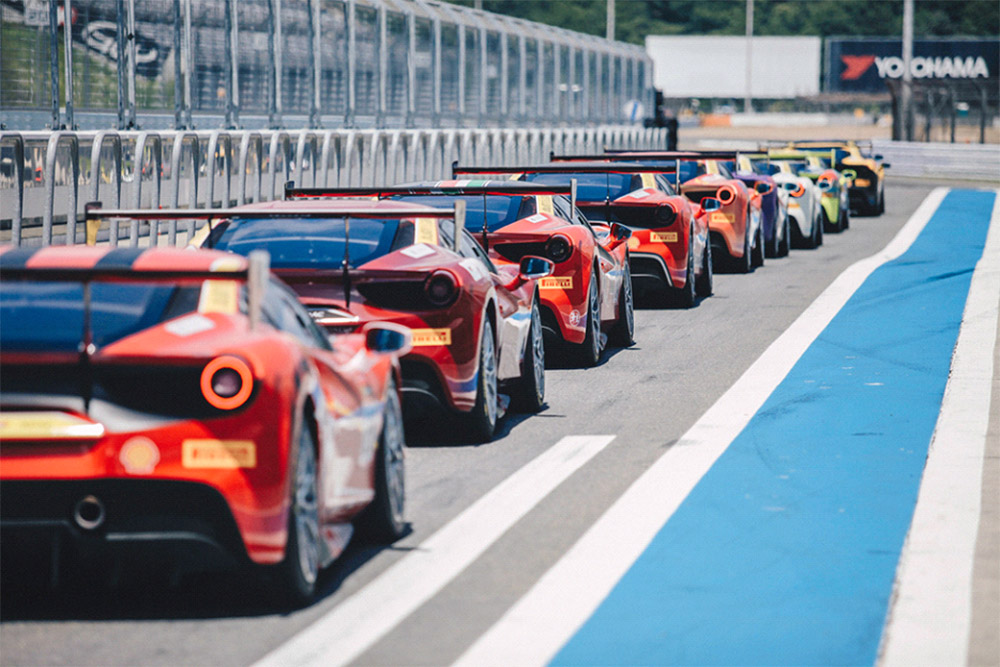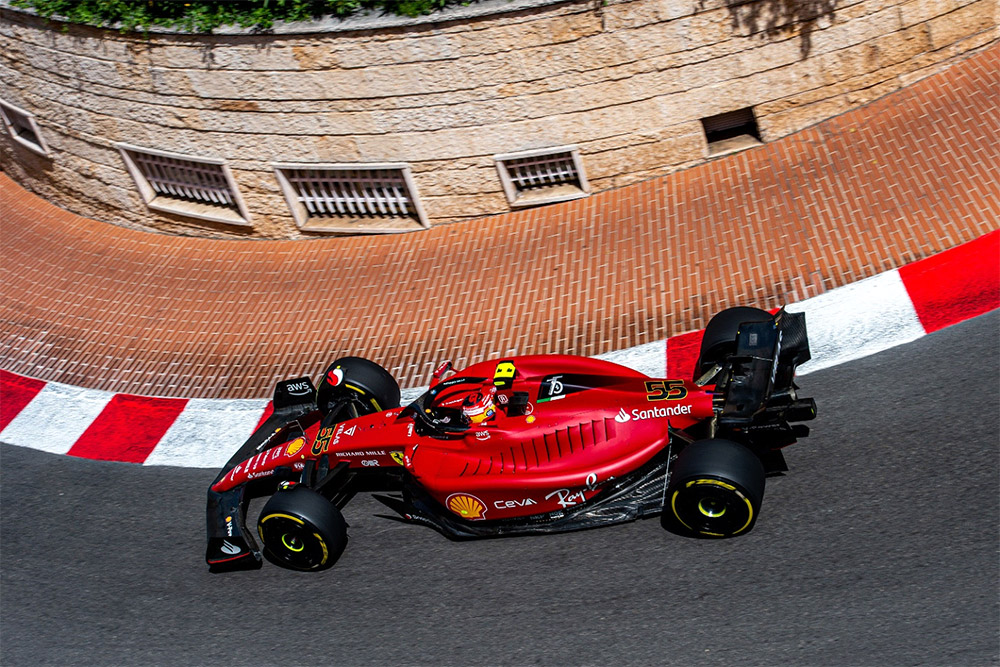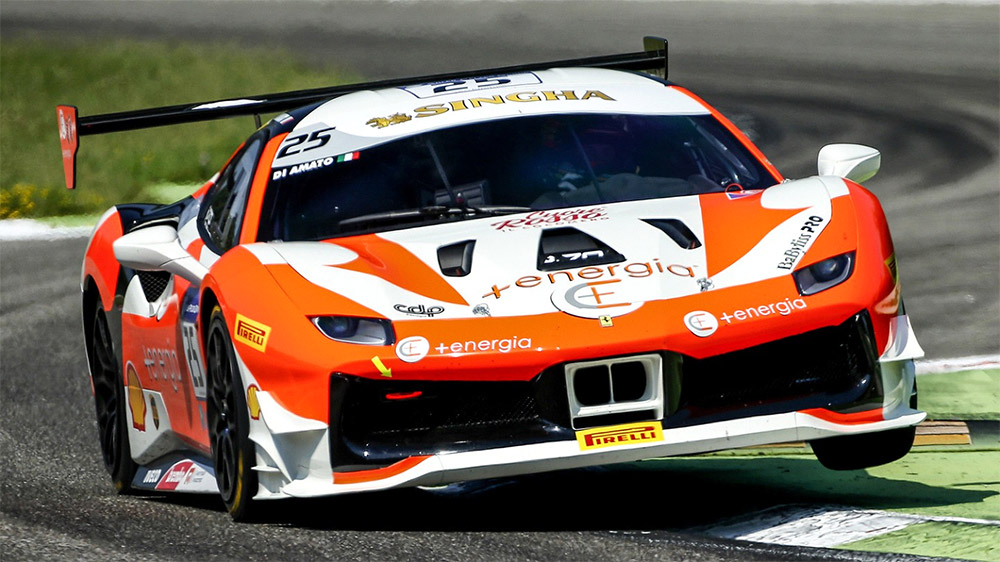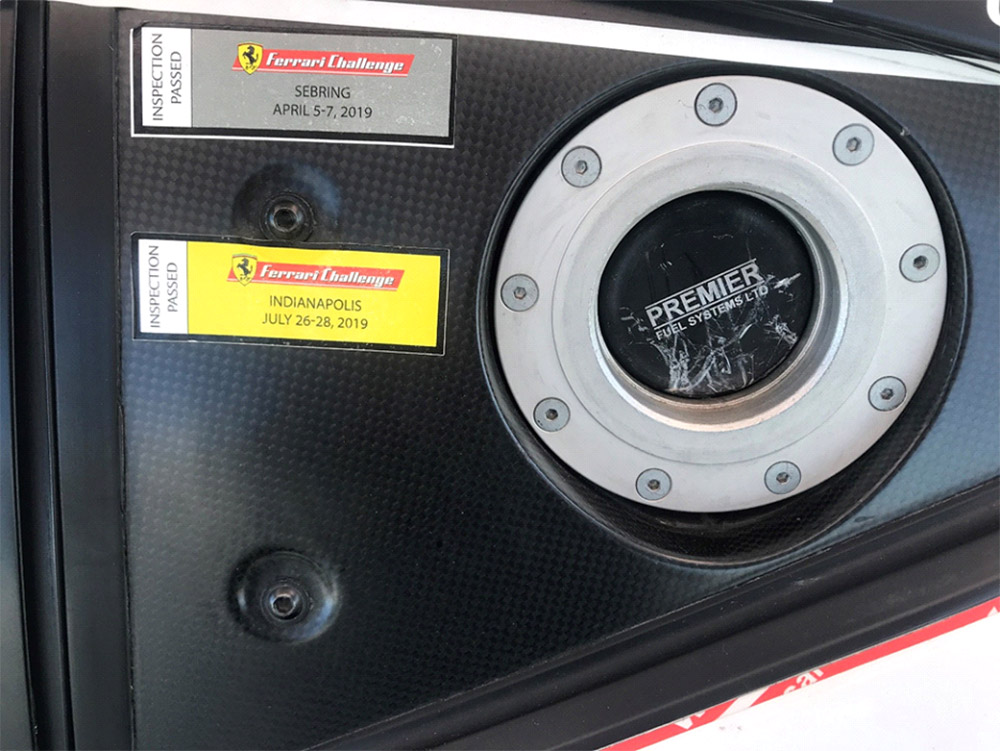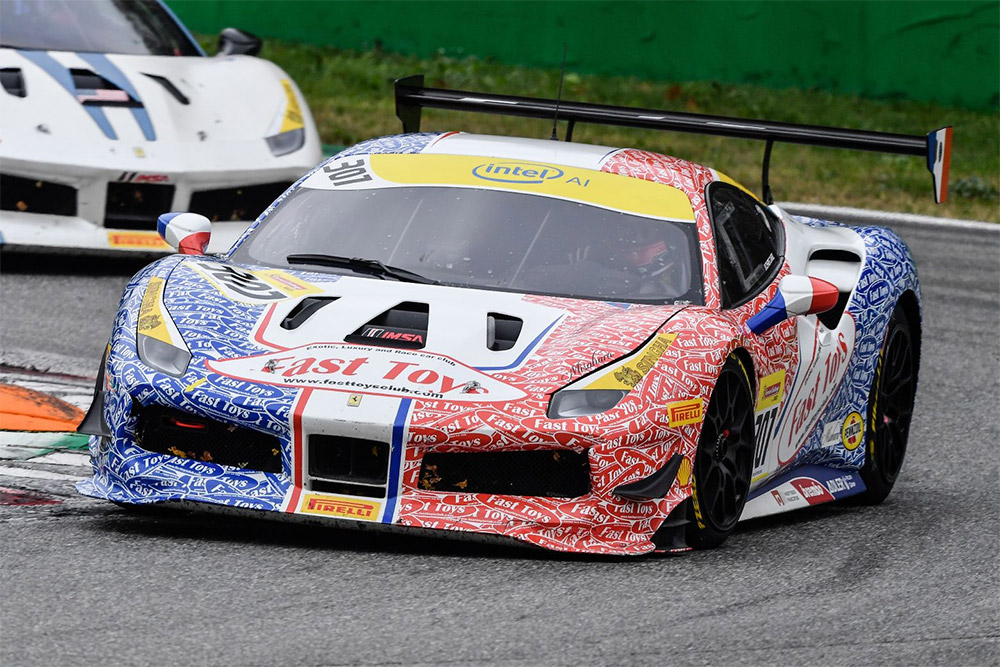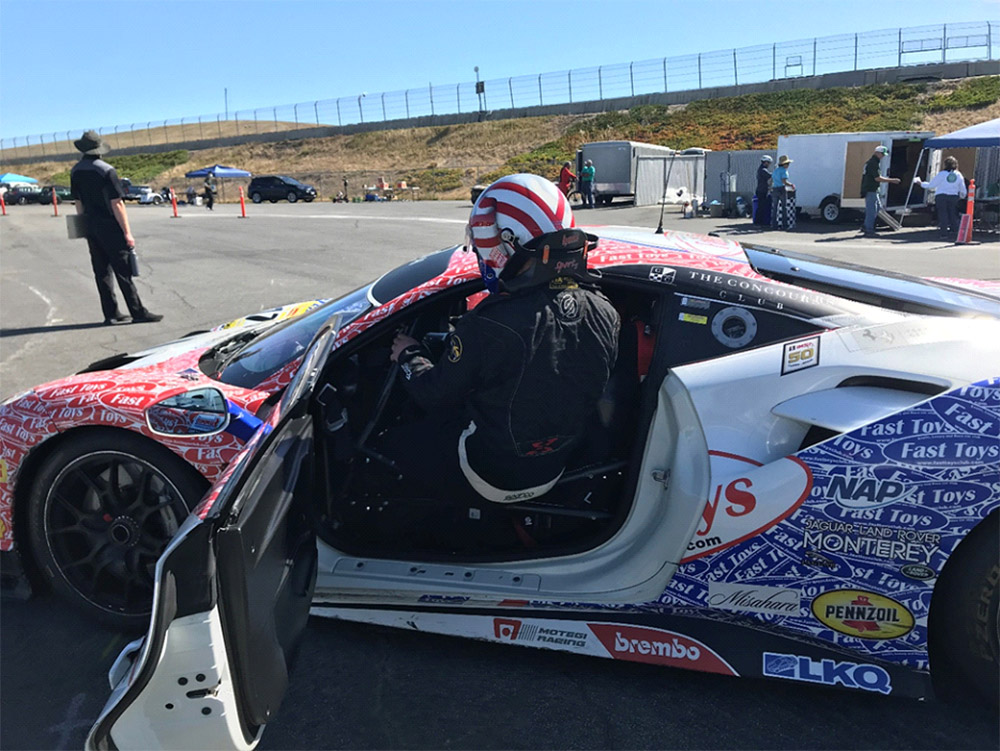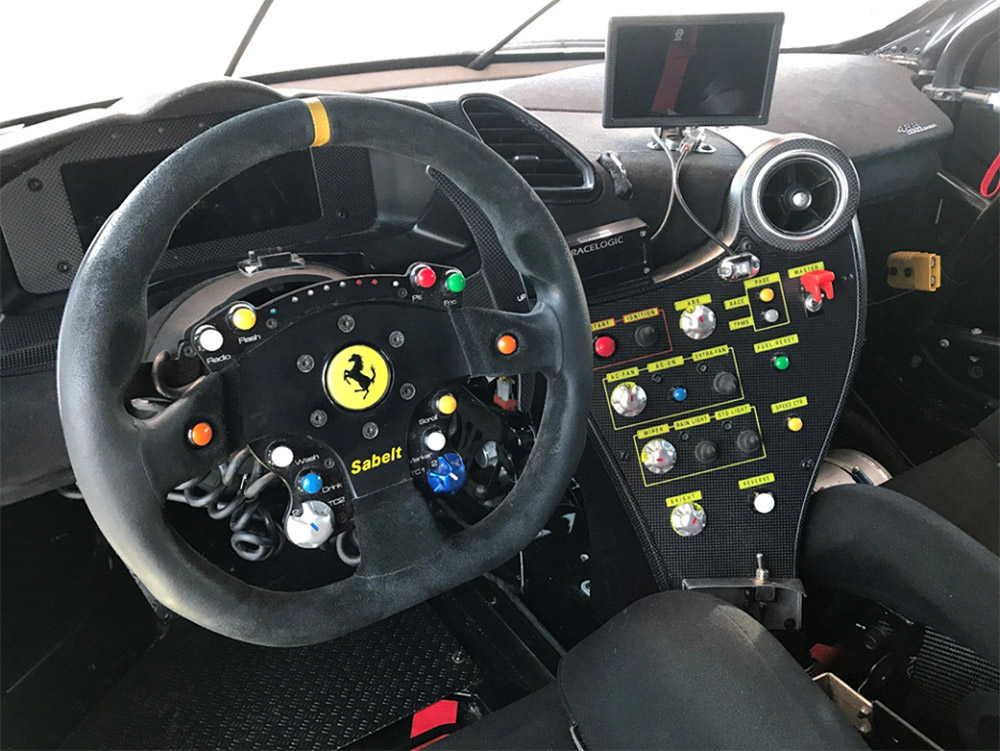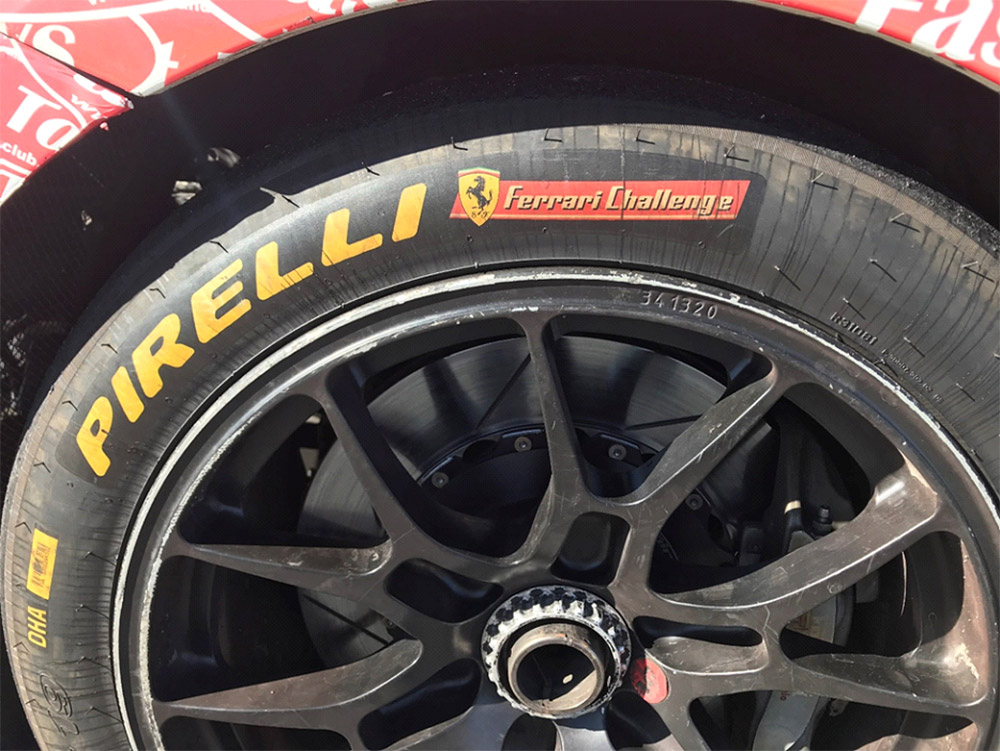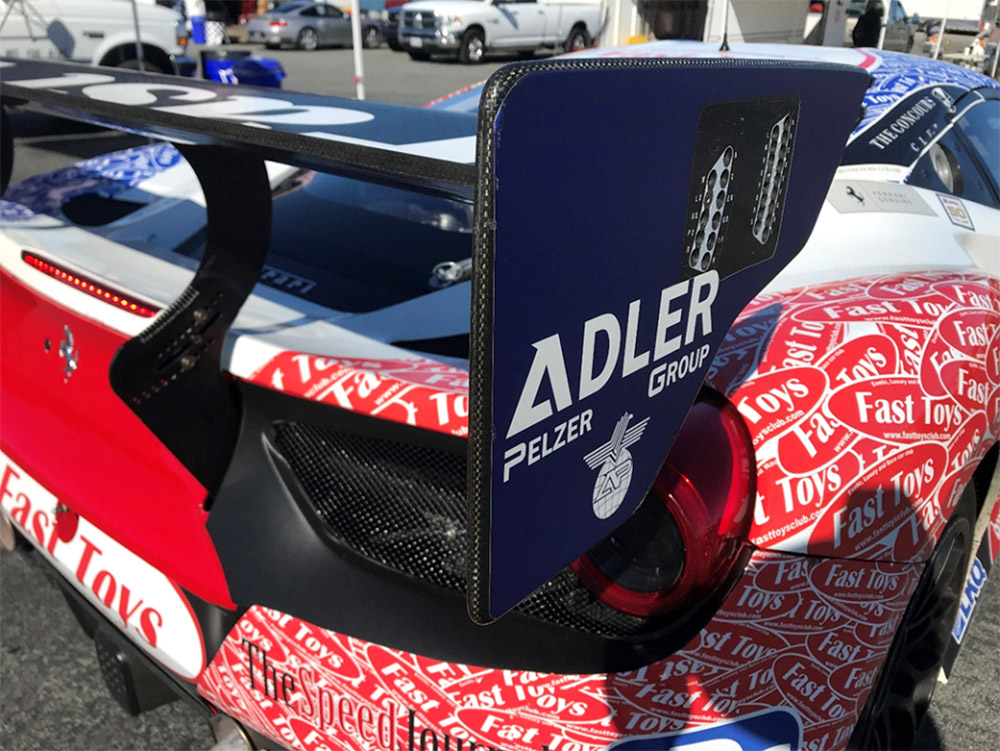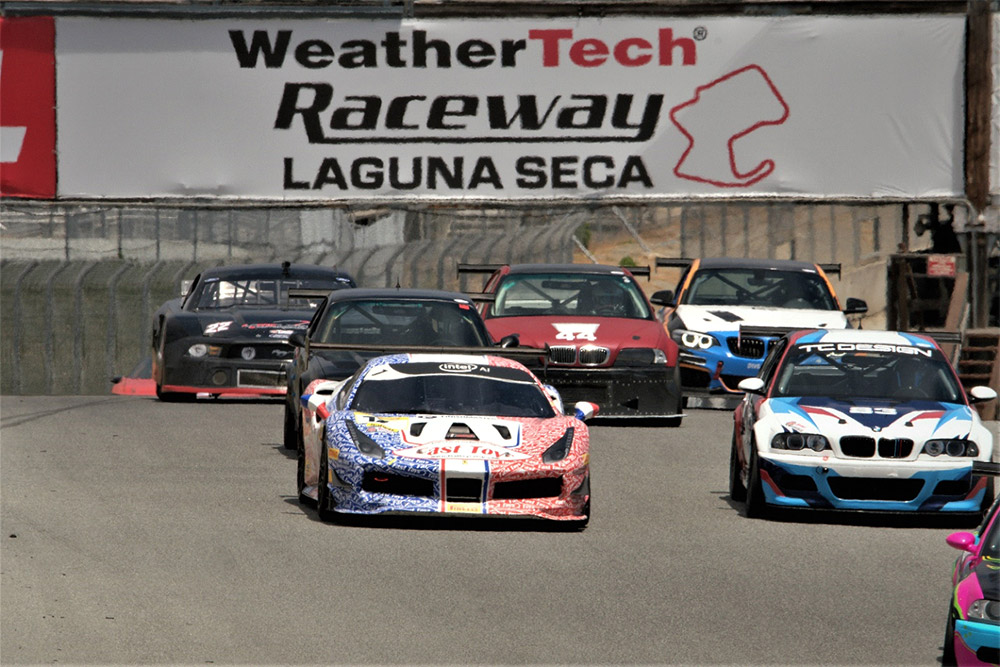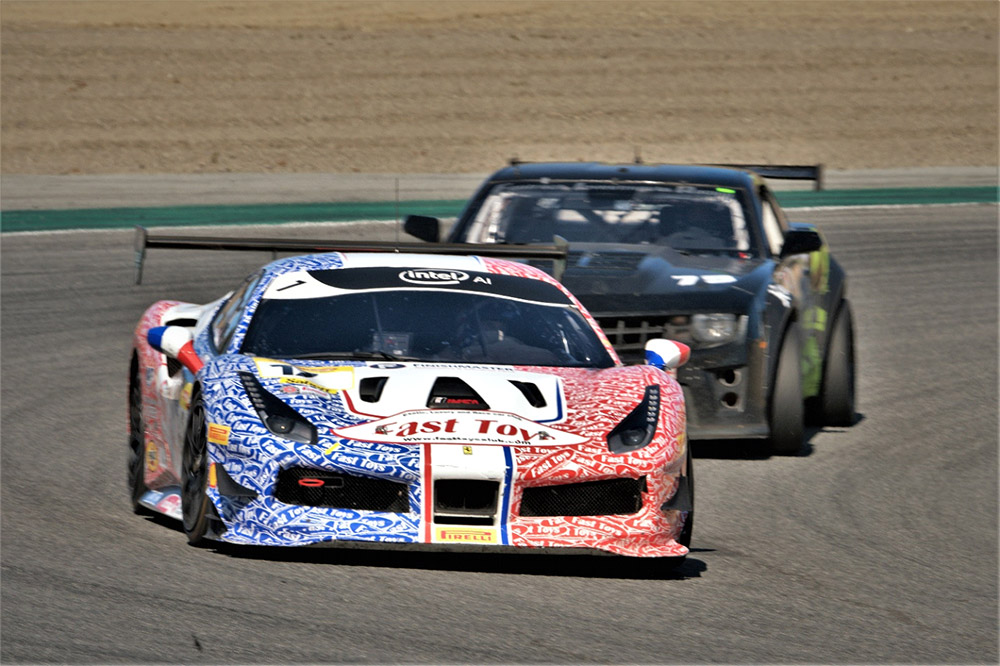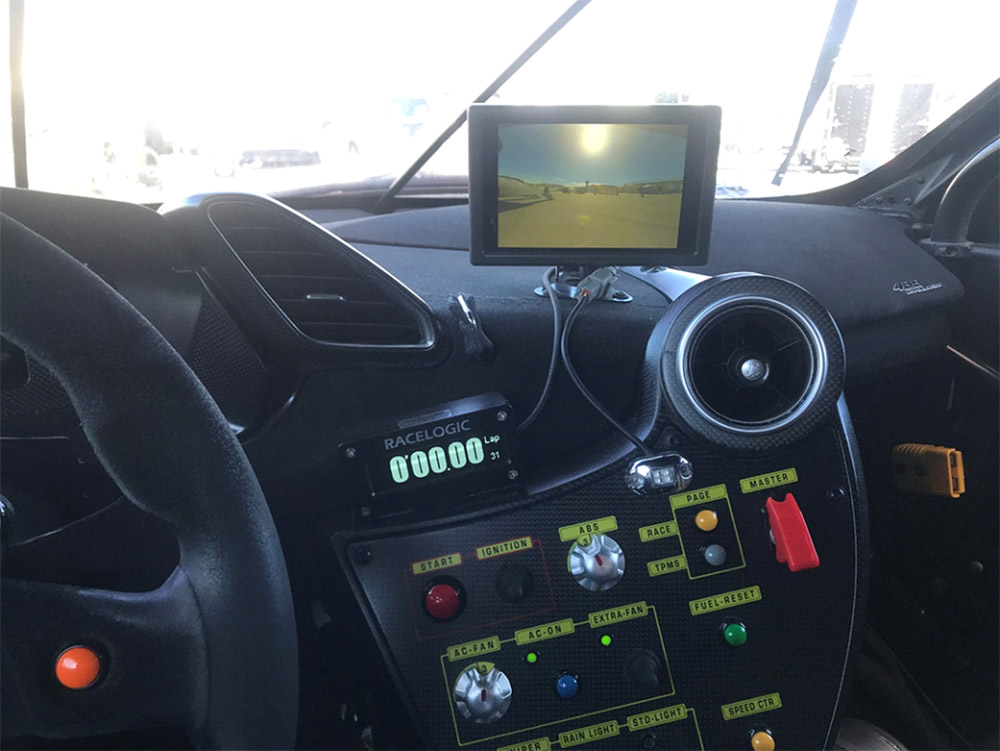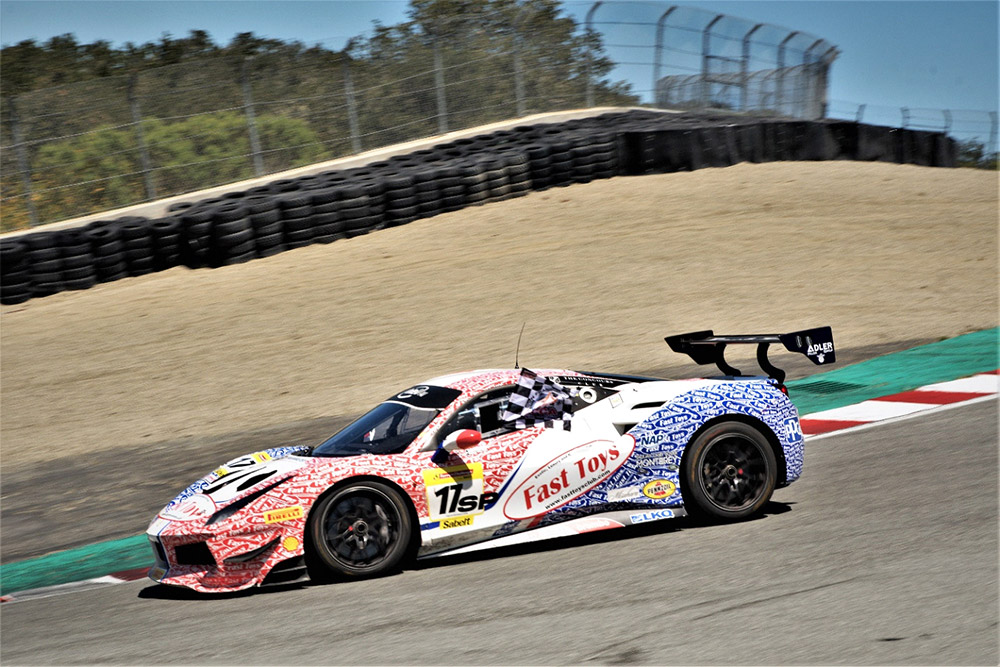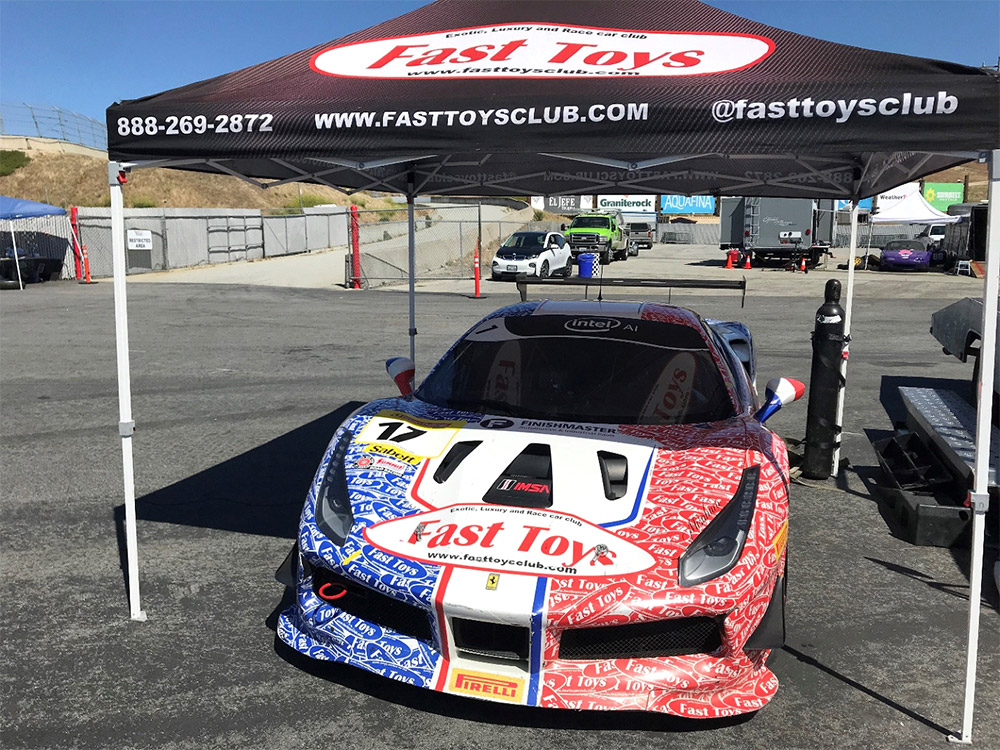Ferraris have always stirred the imagination. We all have wondered at some point what it would be like to drive a Ferrari or, even better, race a Ferrari. The wail of an Italian engine, styling that requires no badge to know it comes from Maranello, a big wing atop the rear deck – this transcends mere transportation. This machinery makes for eyes wide, attracts pointed fingers, and turns heads.
Recently, The Speed Journal was invited to take the controls of a Ferrari 488 Challenge race car around the natural terrain road course at Laguna Seca Raceway. After a day at the track, Speed Journal principal Jeff Francis found that the 488 Challenge lives up to the abstract mental picture that was imagined.
For many, the allure of the Prancing Horse begins in the years of youth. A fortunate few eventually get a ride in a Ferrari or even a chance to log time at the wheel. An even smaller group are fortunate to own a Ferrari. For others, a Ferrari remains an aspirational rarity. Ask any Ferrari owner about strangers taking photos or random people asking how fast their car will go…
Ferrari roots trace directly to motorsport. The company initially built and sold road cars to fund racing, establishing a proper priority. Millions of Ferrari fans track every move of the Formula One team, with a sea of red hats and shirts at every Formula One race around the world. There are debates about favorite drivers, but there is little question for many that their favorite team is Ferrari. What is good for Ferrari is good for Formula One.
The red cars are not limited to Formula One. One example is the 488 “Challenge.” The road roots of the standard 488 aren’t far removed, but the Challenge version removes unnecessary comforts of leather and sound systems and replaces them with a rollcage, racing steering wheel, and racing bucket seats. Unnecessary weight is purged, such as installing plastic side windows instead of glass. They don’t crank up or down, but a sliding panel allows modest access if needed. Ferrari has followed this formula with previous Challenge models, starting with the 348 in 1993 and continuing through the 355, 360, 430, 458 and now the 488.
Private customers race in single-make series against other Ferrari Challenge cars. By regulation, the cars are almost identical which prevents an economic arms race in search of speed. Driver skill and set-up variables like tire pressures make the difference. Different regions around the world hold their local seasons of Challenge races and successful teams and drivers fight for a chance to race at the world finals in Italy to wrap up the season. Ferrari organizes the events and helps with parts and technical assistance for the cars on the track through the Corse Clienti program.
This particular 488 Challenge had a notable competition history of its own. Italian Daniele Di Amato drove it to dominate the Pro class of the 2017 Ferrari Challenge EU and win the championship. Di Amato won six of the ten races entered, including rounds at Monza in Italy, Hungaroring in Hungary, Paul Ricard in France, and Silverstone in England. Additionally, he recorded several other podium finishes, with his lowest finish being a single fourth place result.
After its service in Europe, the car found its way to the US. Chris Carel, head of Fast Toys Club, ran it in the 2018 Ferrari Challenge Coppa Shell US Championship. He earned multiple podiums at Daytona, Road Atlanta, Laguna Seca, and Watkins Glen en route to a third-place season finish. That finish earned a trip to the Ferrari Challenge World Finals. Taking the Ferrari to race against other Challenge drivers from across the world at Monza – and back to where it won previously – was a special way to cap the season.
Francis and Fast Toys Club arranged to enter the Ferrari at a San Francisco Region SCCA race at Laguna Seca Raceway. The natural terrain road course is one of the most well-known tracks in the world for good reason and was the perfect place to unleash the prancing horse.
While the Ferrari marque may have decades of history, this particular Ferrari was a novice in terms of SCCA competition. A mandatory tech inspection was the first order of business. Officials swarmed the Ferrari, checking the roll cage, fuel cell and other safety features. The Ferrari earned a tech sticker on its roll cage that granted weekend track access. It also opened the first entry in its brand new SCCA log book.
Any introduction to a new race car brings a mix of smiles and butterflies, with some requiring an awkward technique to lead with the backside. But the Ferrari required no such gymnastics. It allowed the driver to enter feet first without even requiring removal of the quick release steering wheel. The seat and safety harnesses held the body firmly in place, signaling the forces sure to come on the track. The interior was all race car. Everything had a purpose. Bare carbon fiber was functional and visually striking. Alcantara wrapped interior pieces typically finished in leather on a road car.
The well-known Ferrari badge in the center of the steering wheel challenged the driver to live up to the marque’s reputation. Both the steering wheel and center console housed a plethora of knobs and switches. The two traction control dials allowed drivers to customize their preference. TC1 sets when the traction control kicks in and TC2 adjusts how it kicks in. Both were set at 2 (on a scale of 1 to 10), providing some traction control but also allowed the car to maneuver naturally under excess power. Experienced drivers adjust the dials to fit their preferences and varied track conditions.
With a quick flick of the master and ignition toggles, a pause of a few seconds for the dash cluster to light up, then a push of the red start button brought the 3.9-liter V8 twin turbo charged beast to life. Noise limits at Laguna Seca, however, meant that the beast needed to tame its snarl. Without modification, the Ferrari had no chance to stay below the 103-decibel limit. Ferrari friends consulted prior to the weekend chuckled at the attempt. Patrick Orozco of the Fast Toys crew fashioned a makeshift muffler for an Audi TCR car at Sonoma earlier in the season and pulled it out of the trailer for Ferrari use.
Francis’ first time with the Ferrari at speed was in a fifteen-minute qualifying session. His priority wasn’t grid position, but rather acclimating to an unfamiliar car. Once comfortable with seating position and visibility, he planned to turn attention to acceleration, braking and handling. Logging a quick lap time to avoid starting at the back would be a bonus.
After two qualifying laps, the field returned to pit lane while track workers recovered a Mustang that had an unscheduled meeting with a trackside barrier. Not only did the Ferrari avoid overheating while running at idle, the air conditioning was strong and cold. And that stream of cool air directed to the visor opening on Francis’ Stilo helmet was welcomed.
The session resumed and the question of whether the Ferrari would oversteer or understeer under heavy braking and cold tires was answered. Initially, the tail of the Ferrari threatened to step out of line in turn 2, but it instinctively corrected and pulled smoothly through the corner. As the Pirellis got warmer, the Ferrari found its feet and showed its outstanding handling. Knowing how hard to push and how early into a run was valuable knowledge. Even better, the makeshift noise mitigation measures successfully kept the Ferrari from attracting attention from the noise police.
The post-session briefing focused on handling. The Ferrari’s set up was intended to be forgiving and controllable for Francis’ inaugural run. Dialing in more camber could hold the rear in place more firmly but would also make the Ferrari less controllable when grip eventually disappeared.
Now it was time to go racing. Ferraris found on showroom floors are pricey, but there are no bargains to be found shopping in the race car aisle. Ferrari requires at least $350,000 for a new 488 Challenge car – and that includes no spares or additional consumable costs like fuel and tires. A second hand 488 Challenge car is still worth well over $200,000 so prudence was required to avoid ending up with an expensive wad of Italian carbon fiber.
The Ferrari started mid-pack when the green flag flew. Everyone made it through the first lap without incident but the first lap or two was an adventure as tires built temperature and grip at different rates for different cars and drivers.
The first overwhelming driving impression came accelerating on to the long fast front straight. The tachometer shot up towards 8000 RPM instantly as the Pirellis struggled for grip and the Ferrari’s tail squirmed. The short gear ratios required quick flicks of the paddles behind the steering wheel. With each shift, the engine repeated its urgent rush and the car charged through third, fourth and fifth gears. Shift lights flashed just below the windscreen. They were perfectly positioned to catch the driver’s eye without distracting from the track ahead.
Keeping the Ferrari pointed straight ahead was crucial before releasing all 670 horsepower. The Italian powerplant nestled behind the driver compartment added a soundtrack that filled the cockpit. The 488 rocketed under the bridge at 133 mph – faster than most small aircraft when they take flight. The 488 is the most powerful Ferrari Challenge car ever produced, even more powerful than 488 cars running in IMSA’s GTD class.
The tight double apex left hander at the end of the long front straight was a true braking test. With warm tires, the Ferrari passed with flying colors. Production based cars often struggle, but the Ferrari gave confidence – just point and it will get you there. The steering was precise and the wheel had just the right amount of resistance. The slick Pirelli tires at the front never failed to bite. The splitter and canards at the front and rear diffuser and adjustable wing at the rear helped glue the car to the track. The aerodynamic tweaks had more impact as speeds increased.
As confidence grew, so did the ability to manage weight transfer and traction at corner exit. Roll into the throttle, release the engine, unwind the steering wheel, and push weight to the rear as the tires hang on for traction. The driver had to take care to avoid overstepping the sweet spot. Too much throttle breaks traction and bad things happen with that much power.
The paddles made it easy to run through the gears. The temptation with a high horsepower car is to rely purely on the power to overcome other shortcomings, but the Ferrari hunted for apexes like a hungry dog. It wanted to get to one and then sprint to the next. The Ferrari’s handling allowed different lines – key when going off-line is often necessary to make a pass.
As the race progressed, corner exit speeds climbed and braking points pushed deeper. Francis recalls plunging into turn 5 considerably hotter than prior runs. Brake pedal mashed, the steel brakes came to the rescue and not only prevented going off, but scrubbed off enough speed to allow him to make the apex. Carbon ceramic brakes had been removed due to cost controls, yet even the steel brakes demonstrated that the braking was a key to finding time.
Yet more lap time was hidden in the curbing at apex and corner exit. Stiffly sprung race cars often dance uncomfortably across the curbs. The Ferrari soaked up the curbs and felt like it belonged there – a tangible sign of the racing research and development that touches unseen parts of the car.
No sportscar offers ample visibility but the side mirrors were adequate and a rear-view camera was sufficient for dicing in race conditions. The sole Ferrari shared the track with a large field of 32 other competitors. A gaggle of BMWs, Porsches, Ford Mustangs, Chevrolet Corvettes & Camaros, and a few other marques spread around the track, ensuring that navigating traffic was an ever-present challenge.
The 13-lap race ended without interruption, letting Francis get into a rhythm. A class win earned a checkered flag to take home as a bonus. The club racing venue offered the perfect place to let the Ferrari off its leash. While the car gave confidence, it also signaled that far more potential remained. With more driving time and data analysis, the Ferrari undoubtedly could carve more ticks from the stopwatch. As approachable and intuitive as the Ferrari might be at first, like any race car, it rewards those who can extract the additional fractions of a second.
In the end, it was a successful outing. Driving a Ferrari race car is somehow different than driving other race cars. The silhouette, the sound, and the sensations illustrate why Ferrari has legions of fans. As promised, driving a Ferrari race car was an event.



